88ab4432dec2153611cbbc8f98d96f0f
一、认识硬件
1、大疆C型开发板
我们可以从Robomaster官网上下载C板的用户使用手册,在编写代码的时候用户开发手册往往非常重要。引脚配置、IO说明等信息都可以从用户手册上获得。
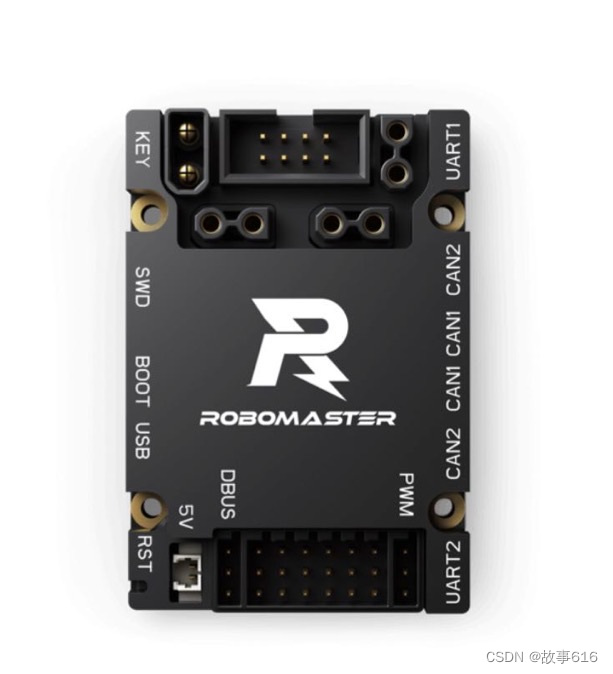
2、GM6020电机
GM6020的说明手册也可以从Robomaster的官网上下载,网址我会在下面给出。GM6020电机自带编码器,特点在于扭矩大,非常适合用来控制云台的航向和俯仰。
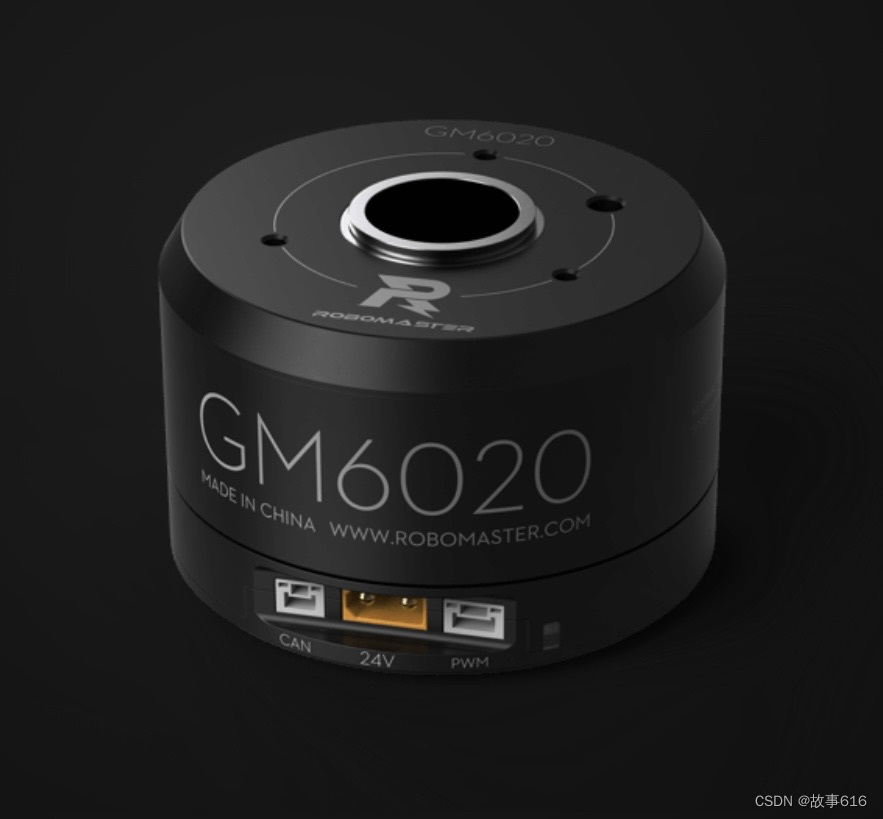
电机的ID切换可以通过电机底下的拨码开关来设置,拨码开关有bit0、bit2、bit3三位,符合二进制编码,详细可见电机使用说明书
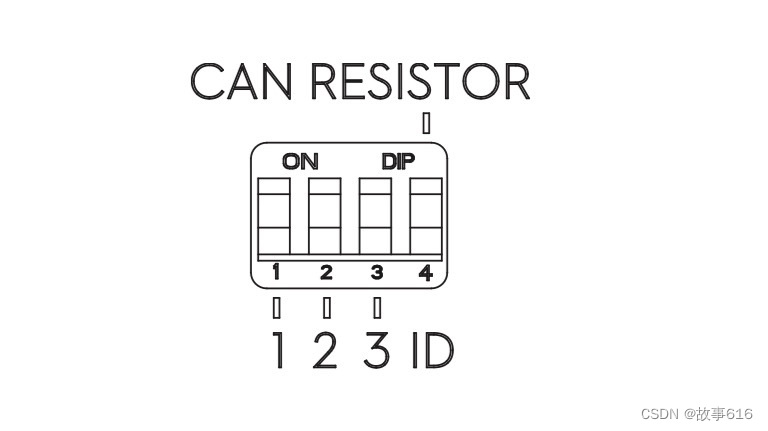

3、网址
二、代码编写
1、CubeMX配置
(1)开启高速和速度外部时钟
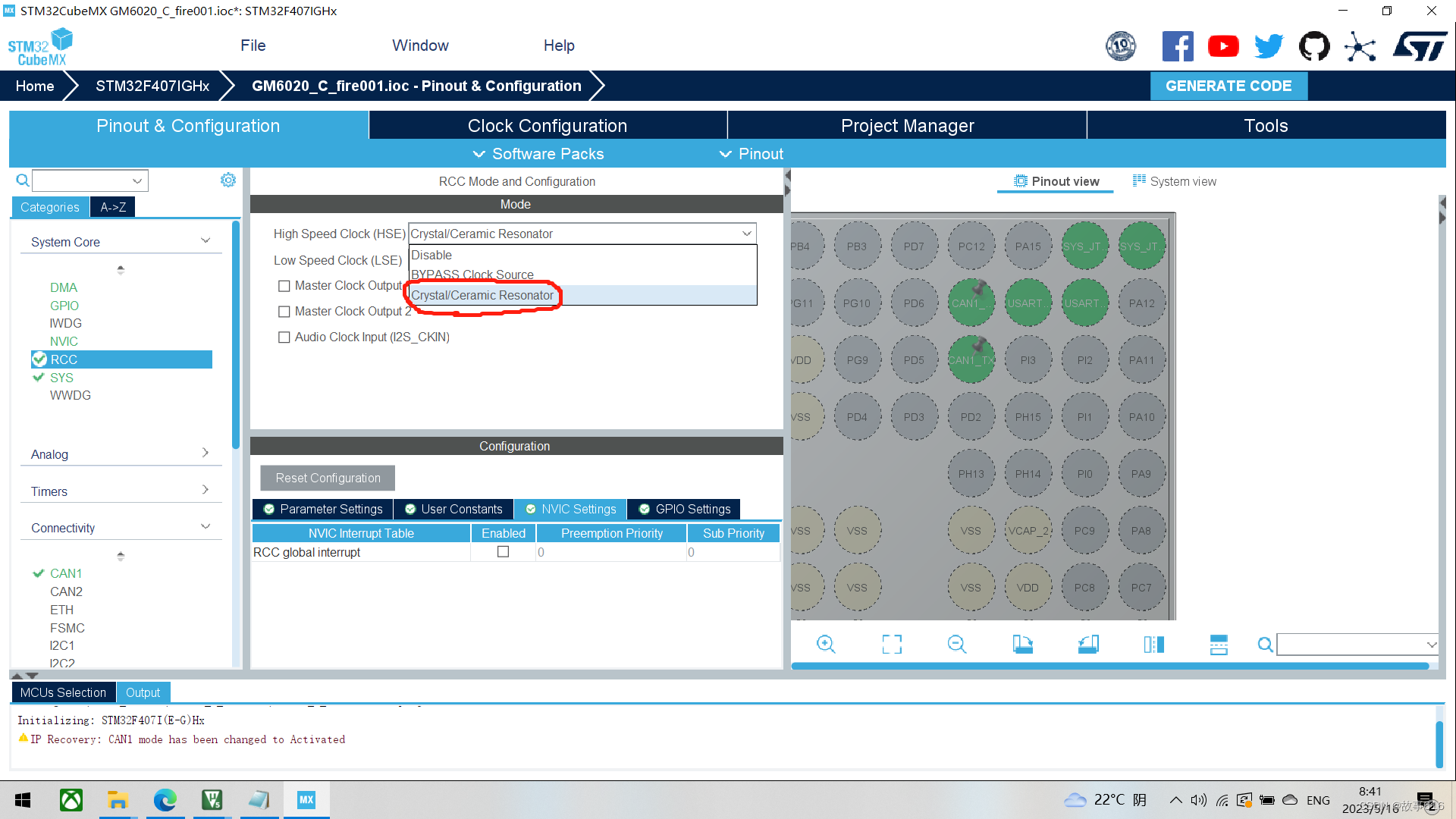

系统时钟设置为168MHz(最大为180MHz),设置为180MHz也是可以的
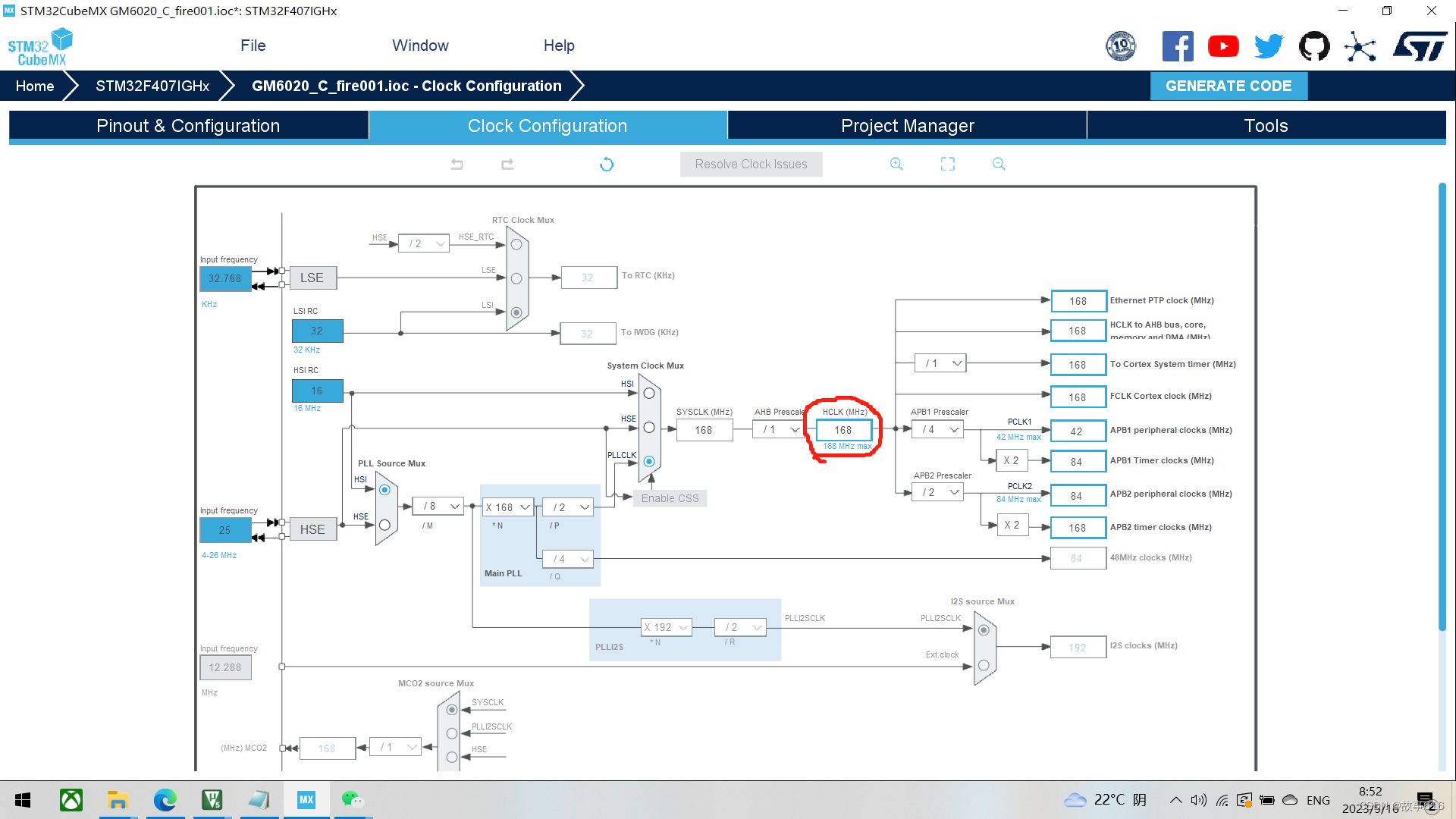
(2)debug设置成SW
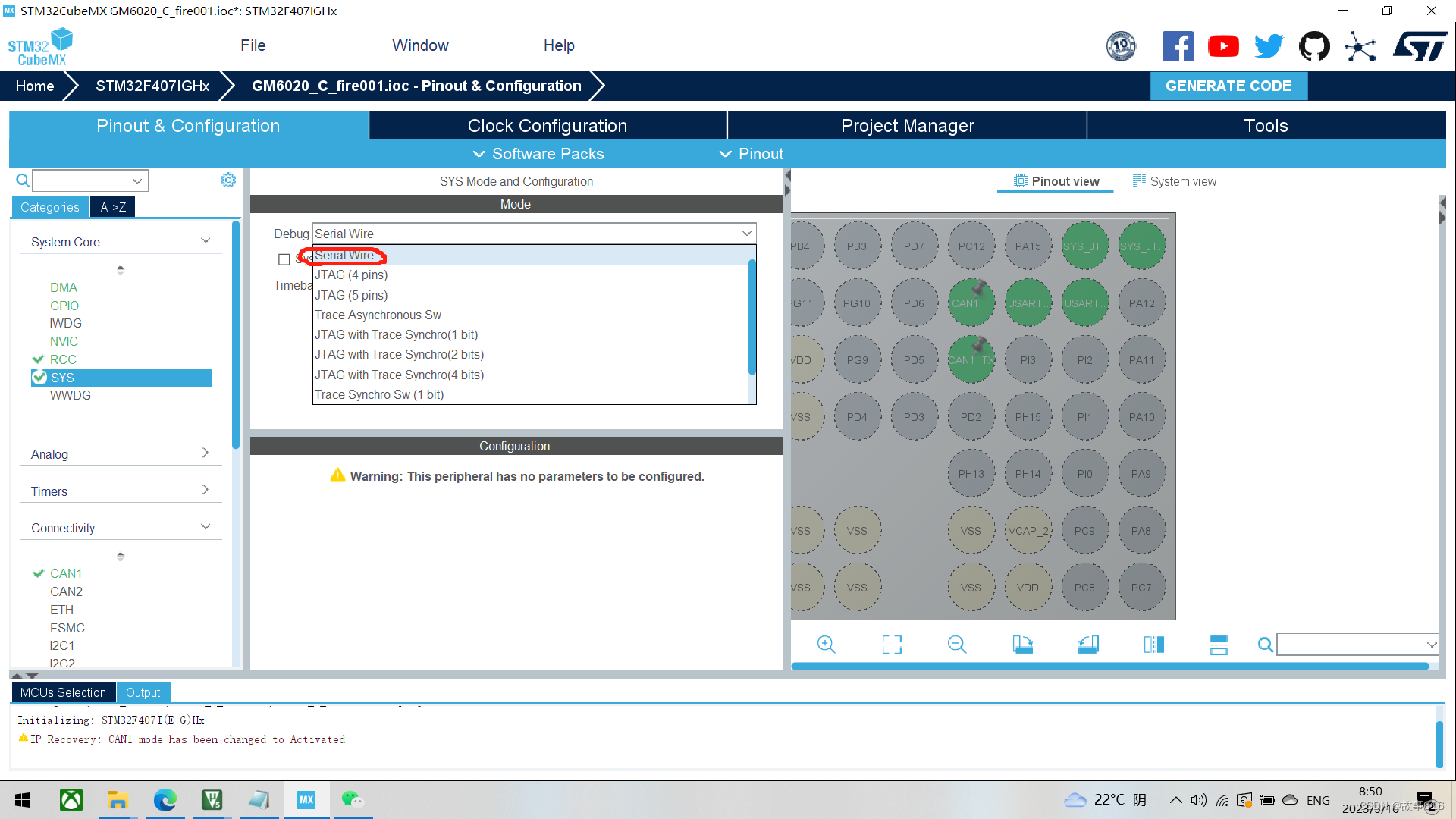
(3)打开CAN1外设
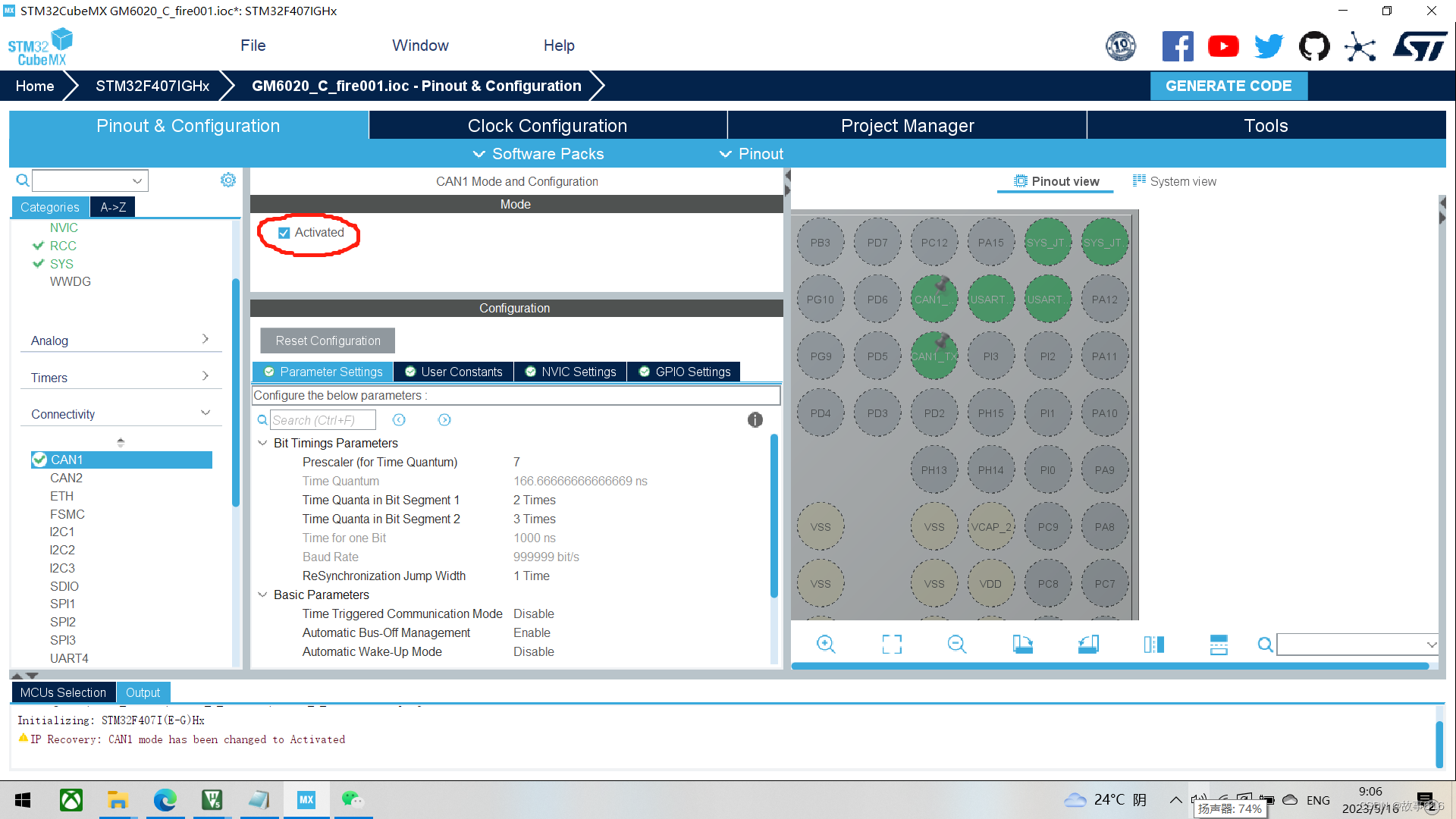
切记在打开CAN1外设时,cubeMX会自动帮你配置,但当我们翻阅C板的使用手册,会发现CAN1的Tx为PD1,Rx为PD0,因此要自己重新配置引脚(这一点很重要!!!!!),如下图


然后是配置CAN总线的传输速率,CAN总线接口最大支持1MHz的传输速率。我们可以将预分频器设置为7,BS1为2,BS2为3
BR=42000000/7/(1+2+3)=1000000Hz
其中42000000代表CAN1所挂载的APB1时钟的频率为42MHz
最后,不要忘了打开CAN1的接收(Rx0)中断
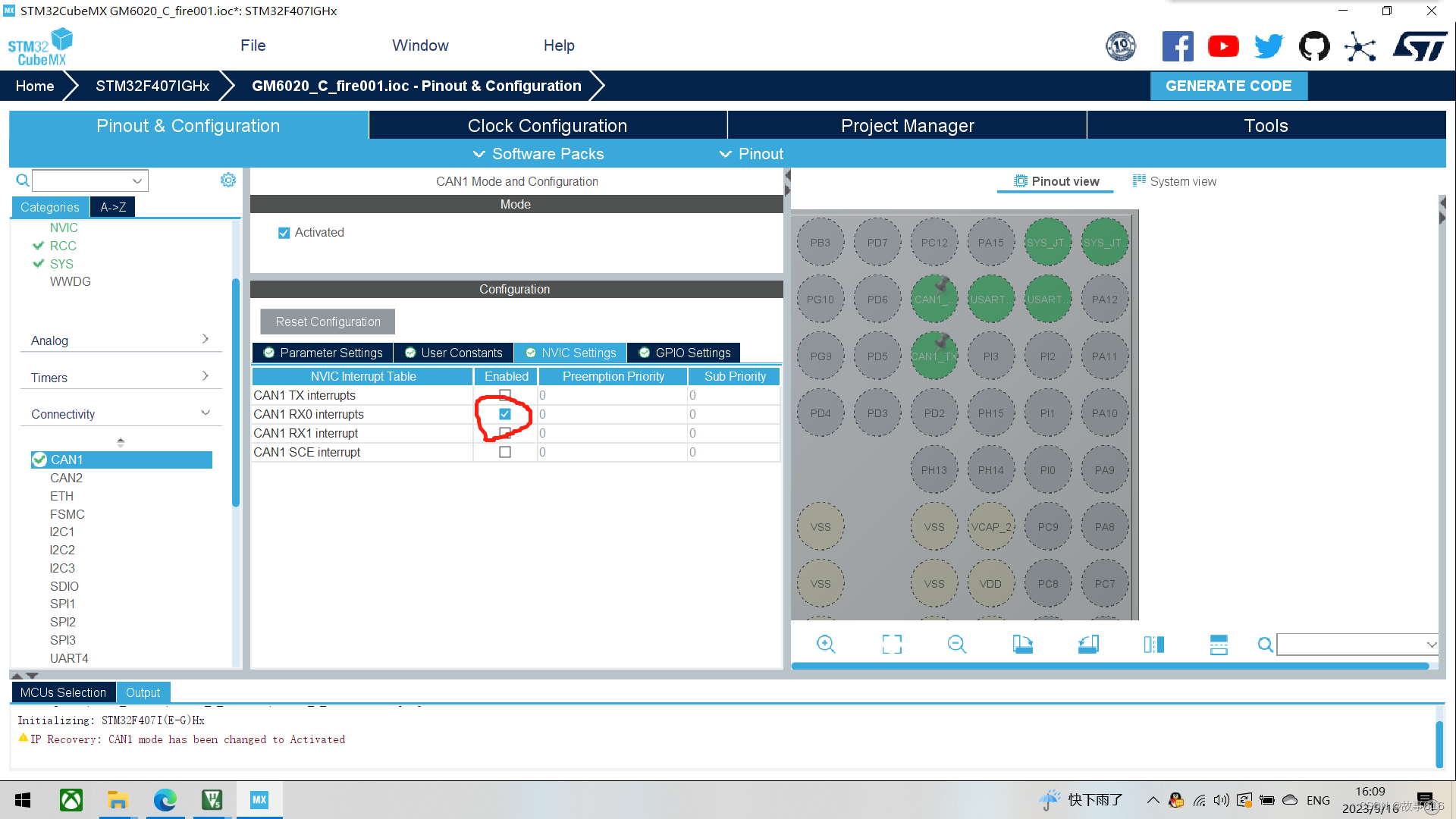
(4)打开C板的红、绿、蓝指示灯,蓝灯引脚为PH10、绿灯PH11、红灯PH12,默认为高电平触发,所以初始状态设置为低电平。红绿蓝指示灯可以在调试的时候使用。
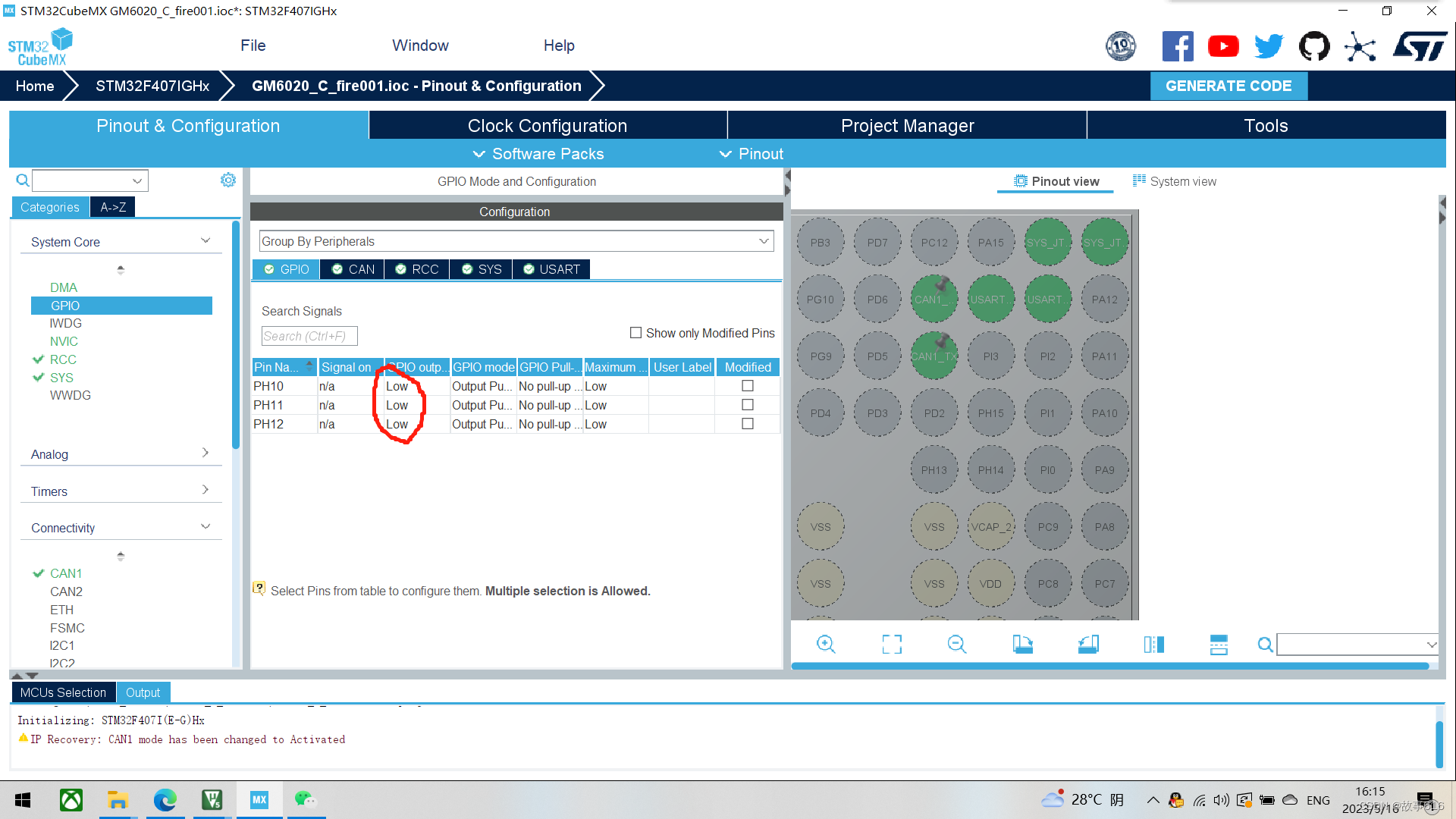
2、代码编写
bsp_can.h
在该头文件中,我们先创建用来储存电机信息的结构体motor_info_t,结构体内的内容也是参照6020电机的使用说明书,详细的大家可以自己去了解一下,如下两图
#ifndef __BSP_CAN_H_ #define __BSP_CAN_H_ #include "main.h" #include "can.h" #include "stm32f4xx.h" typedef struct { uint16_t can_id;//电机ID int16_t set_voltage;//设定的电压值 uint16_t rotor_angle;//机械角度 int16_t rotor_speed;//转速 int16_t torque_current;//扭矩电流 uint8_t temp;//温度 }moto_info_t; void can_filter_init(void); void set_GM6020_motor_voltage(CAN_HandleTypeDef* hcan,int16_t v1); #endif
bsp_can.c
#include "bsp_can.h" moto_info_t motor_yaw_info; uint16_t can_cnt; void can_filter_init(void)//筛选器配置 { CAN_FilterTypeDef can_filter_st; can_filter_st.FilterActivation = ENABLE; can_filter_st.FilterMode = CAN_FILTERMODE_IDMASK; can_filter_st.FilterScale = CAN_FILTERSCALE_32BIT; can_filter_st.FilterIdHigh = 0x0000; can_filter_st.FilterIdLow = 0x0000; can_filter_st.FilterMaskIdHigh = 0x0000; can_filter_st.FilterMaskIdLow = 0x0000; can_filter_st.FilterBank = 0; can_filter_st.FilterFIFOAssignment = CAN_RX_FIFO0; HAL_CAN_ConfigFilter(&hcan1, &can_filter_st); HAL_CAN_Start(&hcan1); HAL_CAN_ActivateNotification(&hcan1, CAN_IT_RX_FIFO0_MSG_PENDING); can_filter_st.SlaveStartFilterBank = 14; can_filter_st.FilterBank = 14; HAL_CAN_ConfigFilter(&hcan1, &can_filter_st); HAL_CAN_Start(&hcan1); HAL_CAN_ActivateNotification(&hcan1, CAN_IT_RX_FIFO0_MSG_PENDING); } void HAL_CAN_RxFifo0MsgPendingCallback(CAN_HandleTypeDef *hcan) { CAN_RxHeaderTypeDef rx_header; uint8_t rx_data[8]; if(hcan->Instance == CAN1) { HAL_CAN_GetRxMessage(hcan, CAN_RX_FIFO0, &rx_header, rx_data); //receive can data switch(rx_header.StdId) { case 0x205: { motor_yaw_info.rotor_angle = ((rx_data[0] << 8) | rx_data[1]); motor_yaw_info.rotor_speed = ((rx_data[2] << 8) | rx_data[3]); motor_yaw_info.torque_current = ((rx_data[4] << 8) | rx_data[5]); motor_yaw_info.temp = rx_data[6]; break; } } } } void set_GM6020_motor_voltage(CAN_HandleTypeDef* hcan,int16_t v1) { CAN_TxHeaderTypeDef tx_header; uint8_t tx_data[8] = {0}; tx_header.StdId = 0x1ff; tx_header.IDE = CAN_ID_STD; tx_header.RTR = CAN_RTR_DATA; tx_header.DLC = 8; tx_data[0] = (v1>>8)&0xff; tx_data[1] = (v1)&0xff; HAL_CAN_AddTxMessage(&hcan1, &tx_header, tx_data,(uint32_t*)CAN_TX_MAILBOX0); }can_filter_init()为筛选器配置函数,筛选器模式为32位掩码模式,显码为0x0000,掩码也是0x00000,也就是说这个函数的掩码掩了一个寂寞,这串代码的作用在于它其实没什么作用,但是如果不配置就无法完成通信,没什么用但一定要有。其次该函数还有初始化can的功能,要将它放在main.c当中
HAL_CAN_RxFifo0MsgPendingCallback(CAN_HandleTypeDef *hcan)为CAN接收的中断回调函数,首先判断电机的ID值(0x205就是GM6020电机的ID1,详细可以参考官方手册),即识别是总线上的哪一个设备(电机)在发送信息,单片机接受来自该电机编码器的信息,如下图(机械角度、转速、转矩电流、温度)

set_GM6020_motor_voltage(CAN_HandleTypeDef* hcan,int16_t v1)为can的发送函数,首先识别数据的标识符是0x1FF(因为电机的ID是1,所以其数据帧的标识符为0x1FF),然后主控发送电压值给电机,驱动电机转动。而发送给ID1电机的电压值为数据帧的第1位和第二位(DATA[0]和DATA[1])


pid.h
该头文件中我们定义pid算法的结构体pid_struct_t
#ifndef __PID_H_ #define __PID_H_ #include "main.h" #include "stm32f4xx.h" typedef struct _pid_struct_t { float kp;//比例 float ki;//积分 float kd;//微分 float i_max;//积分限幅 float out_max;//输出限幅 float ref; // target value目标角度 float fdb; // feedback value设定角度 float err[2]; // error and last error差值 float p_out;//比例输出 float i_out;//积分输出 float d_out;//微分输出 float output;//pid总输出 }pid_struct_t; void pid_init(pid_struct_t *pid, float kp, float ki, float kd, float i_max, float out_max); void gimbal_PID_init(void); float pid_calc(pid_struct_t *pid, float ref, float fdb); #endifpid.c
#include "pid.h" pid_struct_t gimbal_yaw_speed_pid; pid_struct_t gimbal_yaw_angle_pid; void pid_init(pid_struct_t *pid, float kp, float ki, float kd, float i_max, float out_max)//PID初始化函数 { pid->kp = kp; pid->ki = ki; pid->kd = kd; pid->i_max = i_max; pid->out_max = out_max; } float pid_calc(pid_struct_t *pid, float ref, float fdb)//PID运算函数 { pid->ref = ref; pid->fdb = fdb; pid->err[1] = pid->err[0]; pid->err[0] = pid->ref - pid->fdb; pid->p_out = pid->kp * pid->err[0]; pid->i_out += pid->ki * pid->err[0]; pid->d_out = pid->kd * (pid->err[0] - pid->err[1]); LIMIT_MIN_MAX(pid->i_out, -pid->i_max, pid->i_max); pid->output = pid->p_out + pid->i_out + pid->d_out; LIMIT_MIN_MAX(pid->output, -pid->out_max, pid->out_max); return pid->output; } void gimbal_PID_init()//角度环和速度环的PID初始化,只是初测出来的数据,具体还需要测试 { pid_init(&gimbal_yaw_speed_pid, 30, 0, 0, 30000, 30000);//P=30,I=0,D=0 pid_init(&gimbal_yaw_angle_pid, 400, 0, 0, 0, 320);//P=400,I=0,D=0 }该文件中我们运用双环PID控制电机的角度和转速,角度环为内环,计算出当前角度和我设定角度之间的差值;速度环为外环,如果检测出角度相差的值很大,就会输出一个大电压值,为使电机以更快的转速到达设定值,反之则输出小电压,小转速。
PID运算的逻辑图如下
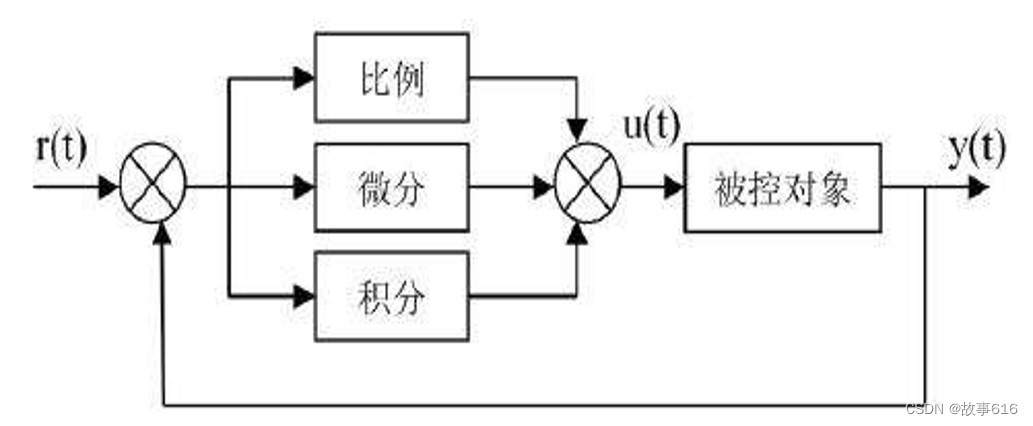
mian.c
#include "main.h" #include "can.h" #include "dma.h" #include "usart.h" #include "gpio.h" #include "bsp_can.h" #include "pid.h" #include "bsp_dbus.h" int16_t led_cnt; int16_t text_speed = 0; int16_t target_yaw_speed; float target_yaw_angle = 0; float now_yaw_angle; extern moto_info_t motor_yaw_info; extern pid_struct_t gimbal_yaw_speed_pid; extern pid_struct_t gimbal_yaw_angle_pid; double msp(double x, double in_min, double in_max, double out_min, double out_max)//映射函数,将编码器的值(0~8191)转换为弧度制的角度值(-pi~pi) { return (x-in_min)*(out_max-out_min)/(in_max-in_min)+out_min; } int main(void) { HAL_Init(); SystemClock_Config(); MX_GPIO_Init(); MX_DMA_Init(); MX_CAN1_Init(); MX_USART3_UART_Init(); MX_USART1_UART_Init(); can_filter_init();//can初始化 gimbal_PID_init();//PID初始化 while (1) { led_cnt ++; if (led_cnt == 250) { led_cnt = 0; HAL_GPIO_TogglePin(GPIOH,GPIO_PIN_11); //blink cycle 500ms } now_yaw_angle=msp(motor_yaw_info.rotor_angle,0,8191,-pi,pi);//计算当前的编码器角度值,运用msp函数将编码器的值映射为弧度制 pid_calc(&gimbal_yaw_angle_pid,target_yaw_angle, now_yaw_angle);//角度环 pid_calc(&gimbal_yaw_speed_pid,gimbal_yaw_angle_pid.output, motor_yaw_info.rotor_speed);//速度环 set_GM6020_motor_voltage(&hcan1,gimbal_yaw_speed_pid.output);//can发送函数,发送经过PID计算的电压值 HAL_Delay(40); } }三、结束语
本人亲测代码是有效,但还是有很多地方需要改善,自己今年是第一年参加robomaster比赛,还有很多需要学习的地方。写这篇博客的契机在于希望对自己这段时间的学习进行总结,也希望将自己的一些经验分享出来,如果上述有什么不对或者不完善的地方也恳请大家批评指正
代码也参考CSDN上很多好的文章,他们比我讲的更好
(6条消息) RoboMaster电机驱动_gm6020波特率_HouEna的博客-CSDN博客
(6条消息) 【RM_EE_Note】1 GM6020收发&简单的PID调试_gm6020控制角度_ScreepsJackeroo的博客-CSDN博客
代码可直接使用。能控制6020电机转动到既定的角度值。
